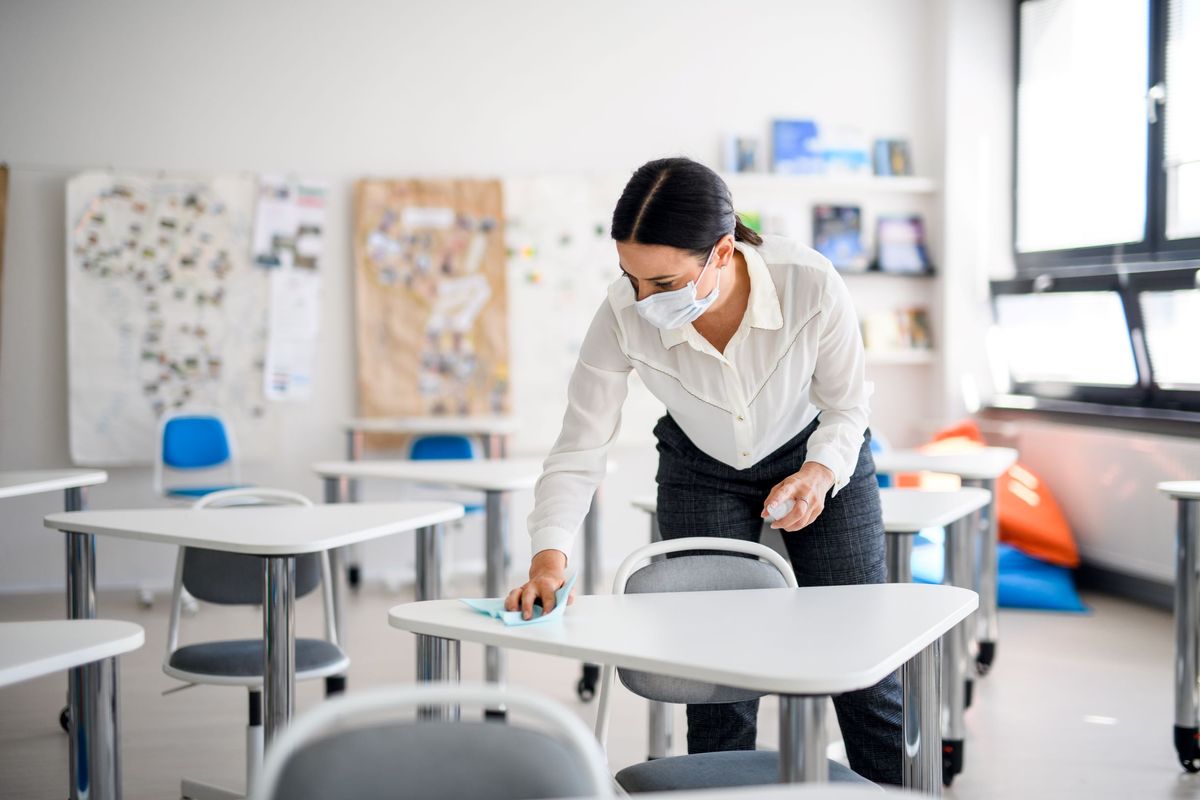Teachers may play a greater role in the transmission of COVID-19 in schools than young students, suggests a small new study by the Centers for Disease Control and Prevention (CDC).
In the study, researchers investigated the transmission of COVID-19 in eight public primary schools in Marietta, Georgia, a suburb of Atlanta, between December 1, 2020 and January 22, 2021. Overall, about 2,600 students and 700 employees these six schools attended at the time.
During the study period, the researchers identified nine groups of COVID-19 cases involving a total of 13 educators and 32 students in six elementary schools. (A cluster has been defined as at least three linked cases of COVID-19.)
In four of the clusters, an educator was the “index patient”, or initial case, and a student was the index patient in only one cluster. In the other four clusters, the index patient was not determined. Eight of the nine groups involved the likely transmission from educators to students.
Two of the largest groups involved teacher-to-teacher transmission of SARS-CoV-2, the virus that causes COVID-19, which probably happened during personal meetings or lunch breaks. The infected teachers transmitted the disease to several students. Overall, these two groups accounted for about half (15 of 31) of school-associated cases in the study, not including index cases, the authors said.
Related: CDC issues new guidelines to reopen schools safely
The results suggest that educators were “central” to COVID-19 transmission networks in schools, the authors wrote in their article, published Monday (February 22) in the CDC newspaper Weekly morbidity and mortality report . “Early infections among educators played a substantial role in the transmission of SARS-CoV-2 at school and in subsequent chains of infection … highlighting the importance of infection prevention among educators in particular,” they said.
CDC’s findings come just over a week after the agency released detailed guidelines on how to safely reopen schools in the U.S. .
The results also agree with those of previous studies in Europe. For example, a study in the United Kingdom found that transmission of COVID-19 from educator to educator was more common in schools than transmission from student to student, and a study in Germany found that COVID-19 transmission in schools were three times higher when the index patient was a teacher compared to when the index case was a student.
Measures to prevent COVID-19 infection in teachers, including measures to minimize personal interactions between adults at school, are likely to reduce transmission of COVID-19 in schools, the authors wrote. In fact, they noted that the Georgia school district in the study has already made changes to reduce personal interactions between educators. Vaccination of teachers can also help prevent the spread of COVID-19 in schools, although the authors note that vaccination of teachers is not a requirement for the reopening of schools.
The study also found that most cases of COVID-19 transmission at school happened when there was “less than ideal physical distance”, which means that students and teachers were very close to each other; and students did not wear face masks properly. This highlights the need to promote “the correct use of the mask and physical distance whenever possible” in schools, wrote the authors. Physical distance is particularly important during meals, when masks are not used, they said.
Originally published on Live Science.
